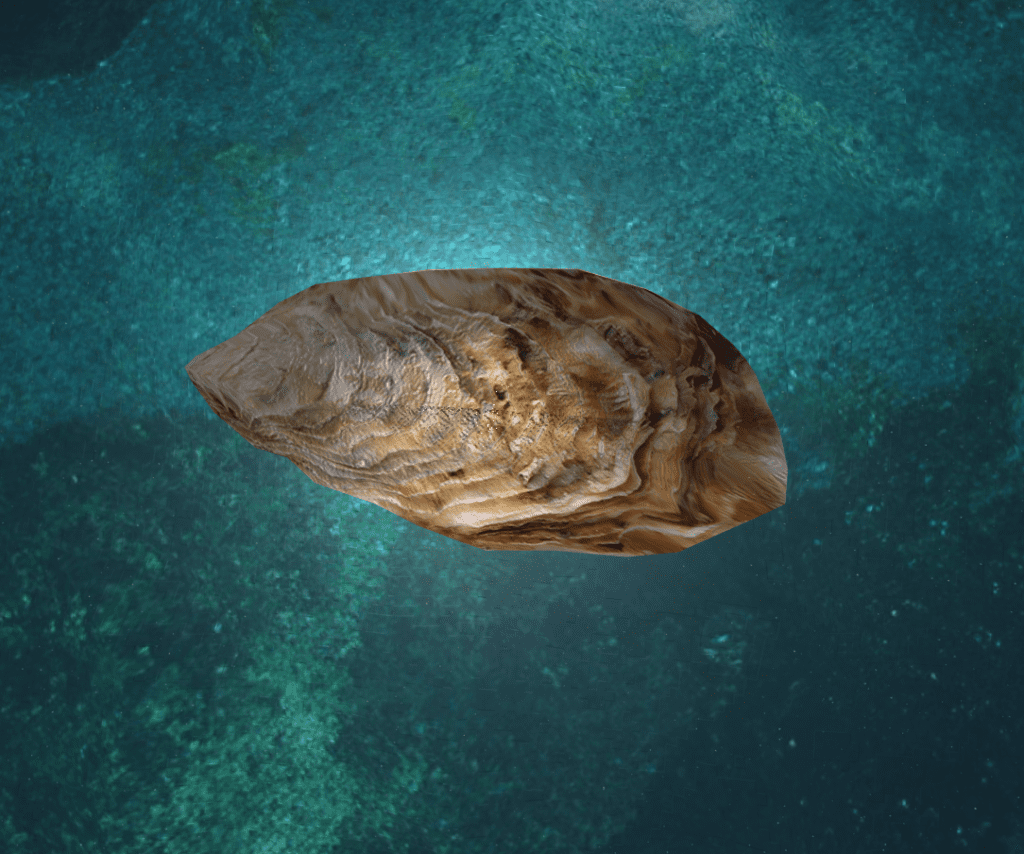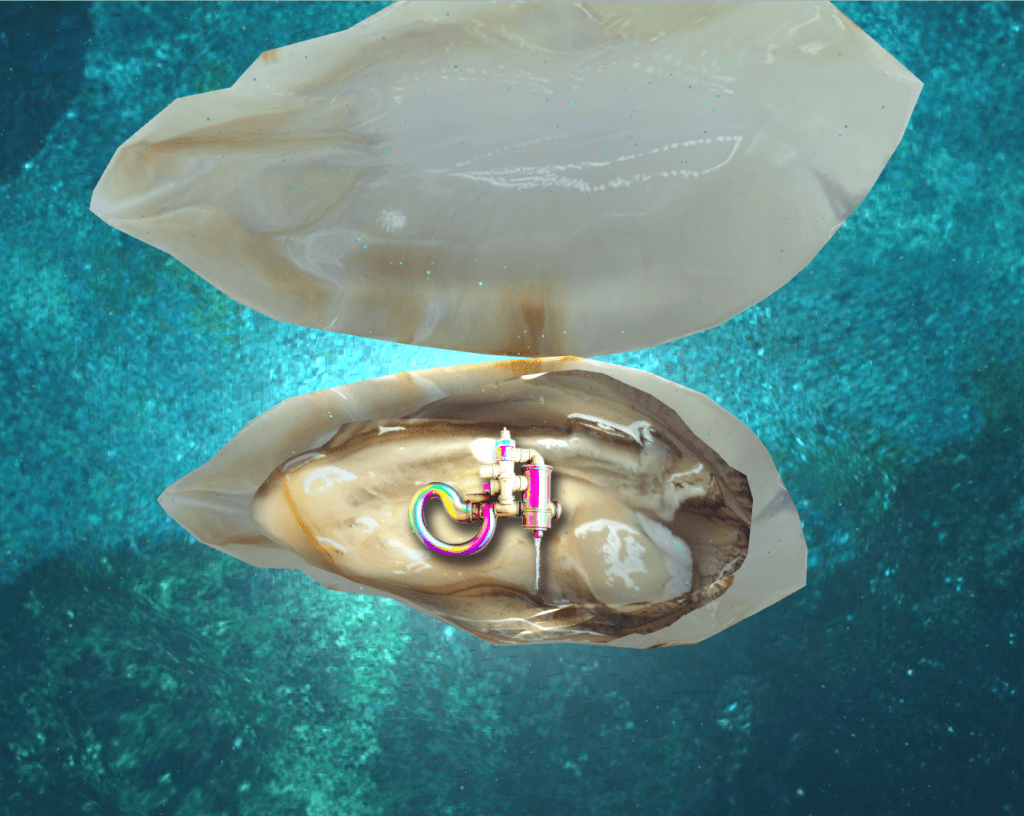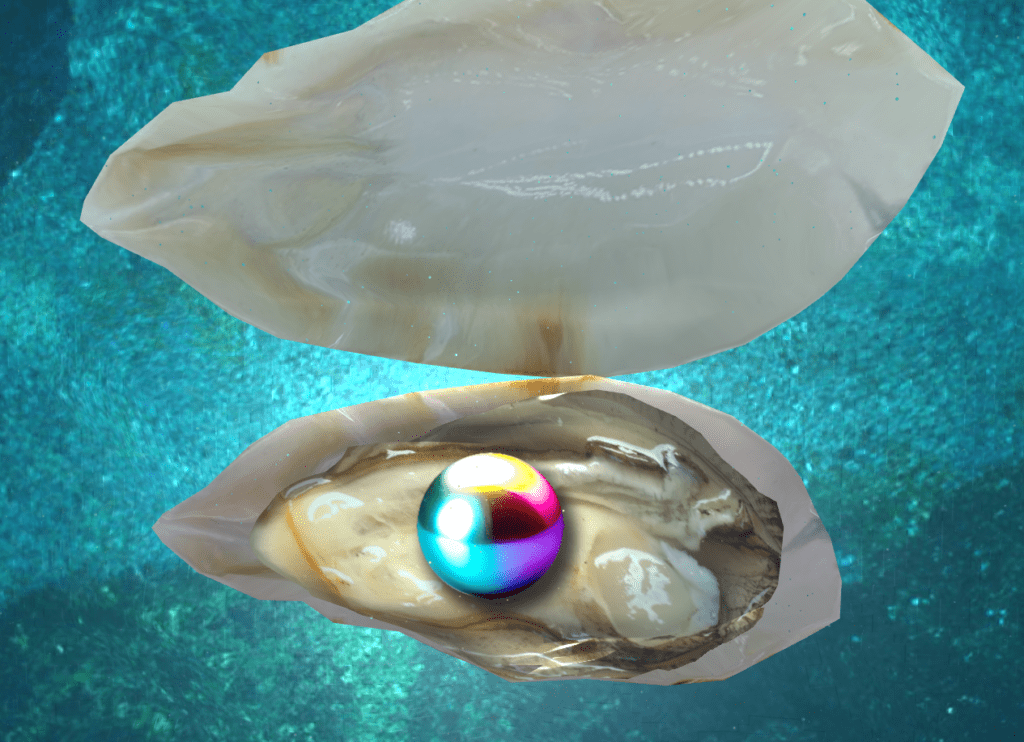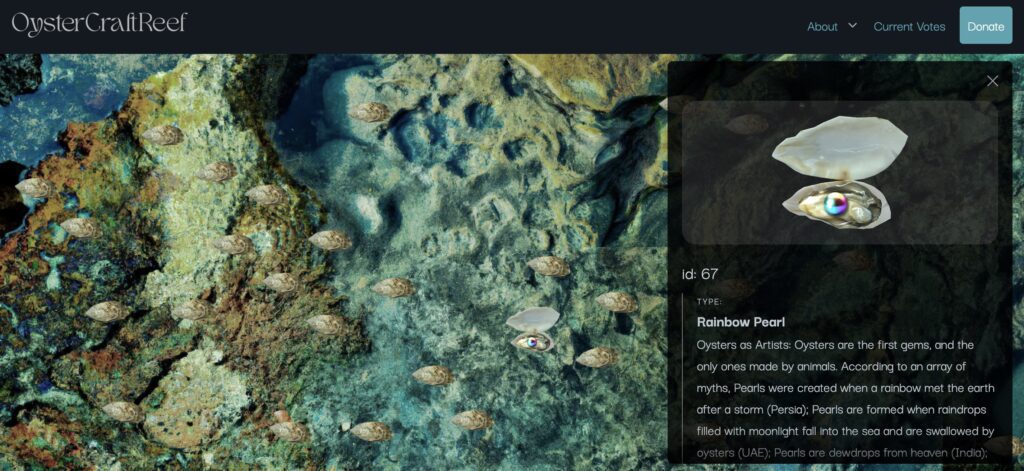Ira Greenberg and Marina Zurkow’s The Dorises – Oystercraft from silicon to saltwater was created for the online exhibition Chain Reaction, curated by Christiane Paul on the Feral File platform.
The Dorises invites collectors to purchase an oyster, a unique NFT in the digital ocean. While the outsides of the oyster shells are similar, there are categories and variations across the 100 oysters in the edition. The oyster innards are structured through custom generative software according to four categories, each based on an aspect of oyster physiology, purpose, and lore: Oyster Engineer (plumbing, cleaning, sifting, filtering machinery); Oyster Artist (creating beauty, wonder, inspiration, well-being); Oyster Sex Symbol (aphrodisiacal and sex-changing); and Oyster Kin (with humans who “farm” and eat them). The artists used AI to generate the oyster elements and backgrounds; embedded across the four categories are fifteen unique surprises, with varying degrees of rarity.
Along with their oyster, collectors receive a unique password that gives them access to the OysterCraftReef website, where they see their NFT come together with the other collected oysters to form a visual reef. As a collective structure, the oyster reef supports real-world projects such as oyster reef cultivation, conservation, and culture work. Within 90 days from the birth of the reef, collectors will vote on distributing the funds generated through their purchase to three different groups supporting oyster reef conservation, which has been identified by the National Oceanic and Atmospheric Administration (NOAA) as a priority. The project title, The Dorises, alludes to Doris, a sea goddess in Greek mythology. Doris was one of the 3000 Oceanids, daughters of the Titans Oceanus and Tethys, and represents the fertility of the ocean. Her name connects the two words Dôron, meaning “gift” or “abundance,” and Zôros, meaning the “pure” and “unmixed,” often used to describe fresh water.




